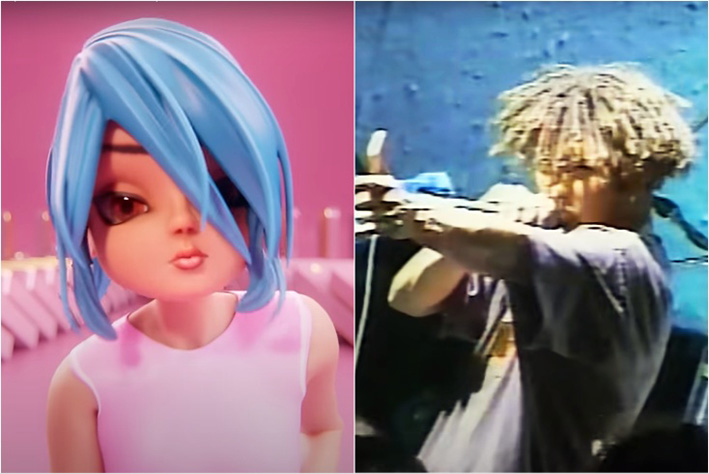Only the clichéd need be afraid: Why gen AI will make us better creators

Opinion
AI might push us to be more original and force us to place more value on striving to invent or deliver the never-seen or never-heard to avoid competing with machines.
As our social feeds become more saturated with generative-AI output, many of us may be left wondering: what does this mean for the business of creativity?
Should dreamers, artists and makers fear the era of mechanised creation? Is the “auto-picture” and the “robo-song” set to supplant the artistic endeavours of humankind?
If you’re worried about how AI challenges your creative practice, I have some good news in the short term: only the clichéd need be afraid.
We should take solace from the fact that the word “generative” within gen AI doesn’t clue us in to what’s going on. A more useful term might be “emulative AI” or “Imitative AI”.
Essentially, gen AI is a computerised process that merely “requotes” existing material in a familiar form. It’s a covers band. Or a comedy impersonator.
So, while gen AI has no issue producing a pastiche or a homage, it relies on there being an original style to reference. In short, gen AI can reiterate but not originate — a distinction that can play a key role in allaying our fears.
Rage against the music machine
For a keener understanding of how this might affect the creative industry, let’s turn to the pre-ChatGPT era for an illustration of the difference between reiteration and origination.
In 2009, with producer Simon Cowell’s single predicted to be Christmas number one for the fifth year running, couple Tracy and Jon Morter started a counter campaign to get Rage Against the Machine to number one instead. Railing against the bland, disposable cookie-cutter pop of The X Factor, the pair described the campaign as “a defiance to Cowell’s ‘music machine’”.
Famously, it worked. Rage Against the Machine’s Killing In The Name reached number one, resulting in the band delivering a free concert in Hyde Park, London, to say thank you to the fans.
There’s something significant in the Morters choosing Rage Against the Machine to face down Cowell. When the band exploded on to the scene in 1991, the music was exciting, controversial, angry and authentic. It was the antithesis of the predictable patterns of manufactured, derivative and overproduced pop.
The role of clichés
Fast forward to the era of gen AI and a question: which of these two music forms is likely to be reproducible by AI today — the chart pop or the furious rap-funk-metal? Which is more easily broken down into predictable patterns? Which is more formulaic?
The answer is pop, surely. I’d hazard an AI could understand and recreate the codes of chart pop in the blink of a computerised eye. In the era of gen AI, using clichés will make you a target.
But let’s imagine I’m wrong. Let’s say an AI could imitate both genres with equal ease. There’s still an important distinction here: our differing level of acceptance of synthetic content.
We already know that non-existent pop stars do not perturb pop fans. Virtual character Noonoouri, for instance, has 450,000 followers on Instagram and is now about to release her first single after signing to Warner Music.
But would people stomach a dreadlocked AI avatar rapping its righteous indignation over heavy guitar riffs? Surely the value is that Rage Against the Machine singer Zack de la Rocha’s volcanic delivery contains authentic emotional content and thus has meaning. Surely we want to see this performed live by a real band and a real crowd, with the ever-present tension of the gig erupting into mosh-pit anarchy.
Music needs to move us. Beyond pop, can an AI really do that?
Virtuality vs virtuosity
Not only might we struggle to accept virtual replacements for our more authentically human art forms, but we might also still have the edge when it comes to artistic innovation. Recall that gen AI can only cross-reference what is already in existence — at least for now. As Silicon Valley guru Jaron Lanier states, AI is merely the “repackaging of human endeavour”; its work is contingent on the pre-existing.
But given AI now has the measure of our clichés and conventions, it’s possible it might push us to be more original and force us to place more value on striving to invent or deliver the never-seen or never-heard to avoid competing with machines that can copy our moves.
Let’s illustrate this point with another musical example.
A recent survey showed that 97% of 21st-century pop music is in 4/4 time. To explain: that’s four beats in a bar — the “vanilla ice-cream” of musical tempos. It’s so frequent that it’s sometimes called “common time”.
Contrast that with bands at the edge of musical innovation. If you’re anything like me, you’re bang into your prog-jazz-metal. Critically acclaimed band Animals as Leaders has a song, Monomyth, that is so rhythmically complex and virtuosic in its technicalities that there are pages of YouTube videos dedicated to decoding the song’s structure, guitar-picking technique and tempo changes.
Most listeners would struggle with its discordant crunching and undanceable rhythms, but it sounds like nothing else that has come before it. One pundit described the song as “percussive physics”.
Again: which is more under threat from gen AI? The pop tune in 4/4 time or the disorientating futuristic-heavy-metal-jazz?
It’s the former, surely.
Tech progress pushes art forward
Of course, this can open us up to accusations of musical snobbery. We can’t all be into the avant-garde. Tastes vary. There’s a reason why The X Factor winner Leona Lewis’ song Bleeding Love has nearly 400m views, while Monomyth has only 2m.
But that really isn’t the point. This is not about superiority of taste. This is about how those originating, innovating and inventing are more likely to hold off the rising tide of machine creations versus those reverting to the predictable and the formulaic.
This is not a new phenomenon. When the camera was invented, commentators feared that painting had ended, asking how it could possibly compete with a machine that could capture reality perfectly. Yet only a short while later, the Cubism movement caught fire, with Picasso’s radical and pioneering deconstruction of form bringing a new perspective to the public. Technology pushed humans to push the boundaries of their art.
The gen AI of the 1900s, had it existed, could have never invented Cubism. The gen AI of the 1990s could not have delivered an explosive rock-rap-sermon on the evils of racism. The gen AI of today could not have written the distorted polyrhythms of Monomyth.
A human had to create it first.
Thus, as humans, we should remember that we retain first refusal on the right to execute big ideas, crazy dreams and bold concepts, safe in the knowledge that only we can truly originate and only we can produce work that has meaning.
True enough, gen AI will threaten that means of production by crushing the clichéd, destroying the derivative, torpedoing the trite — simply by learning to copy it.
But if that encourages us to move into white space to map new territories or express ourselves through raw, eloquent and authentic truth-telling, we’re all the better for it.
 Phil Rowley is head of futures at Omnicom Media Group UK and the author of Hit the Switch: the Future of Sustainable Business. He writes a monthly column for The Media Leader about the future of media.
Phil Rowley is head of futures at Omnicom Media Group UK and the author of Hit the Switch: the Future of Sustainable Business. He writes a monthly column for The Media Leader about the future of media.



